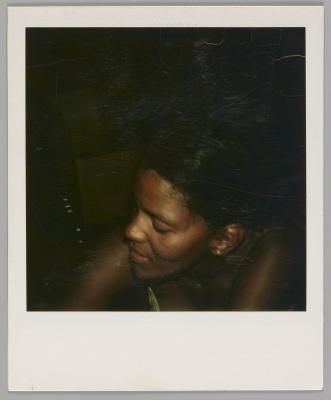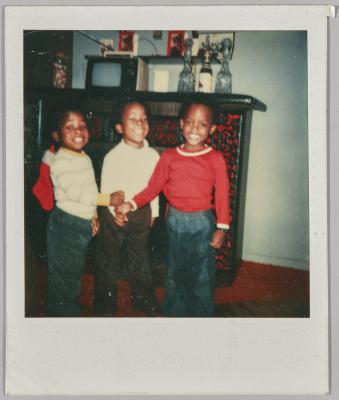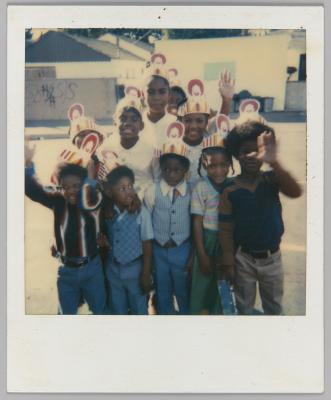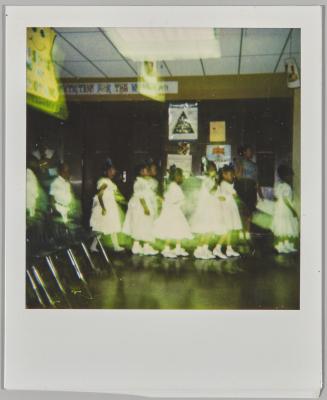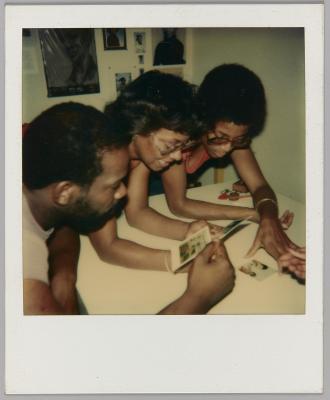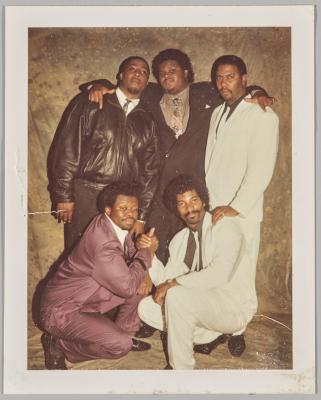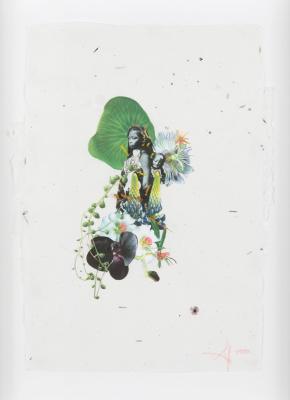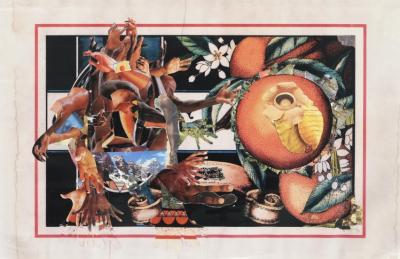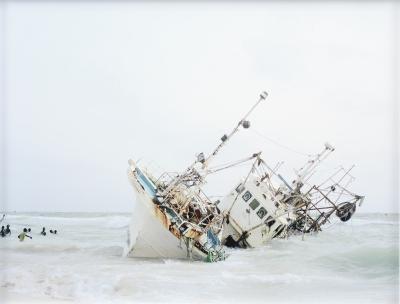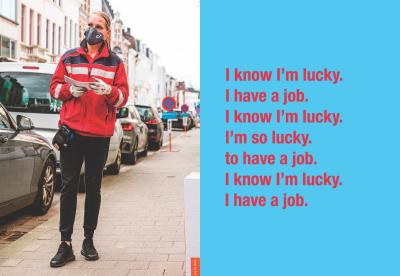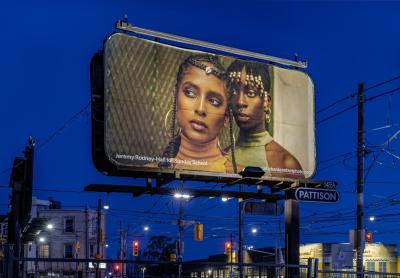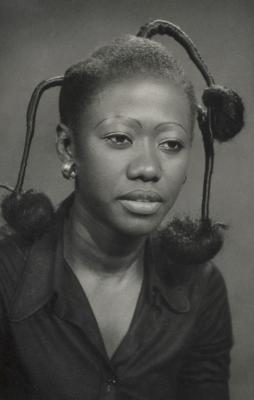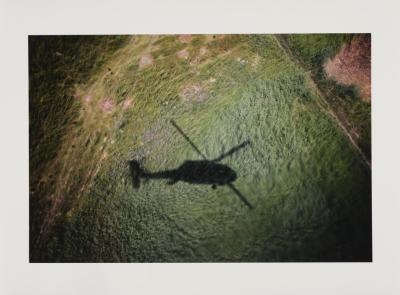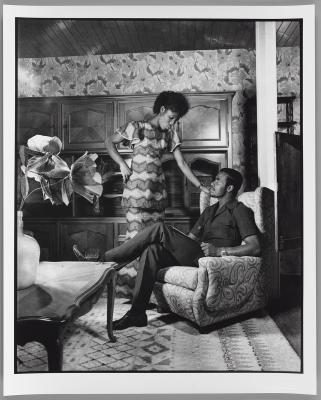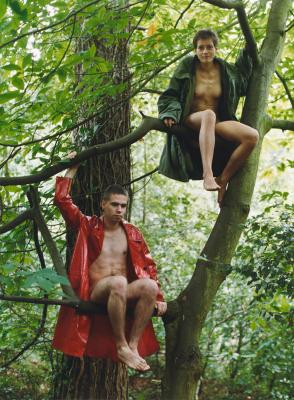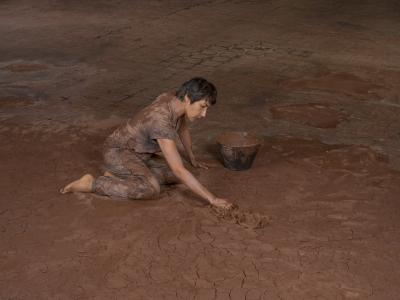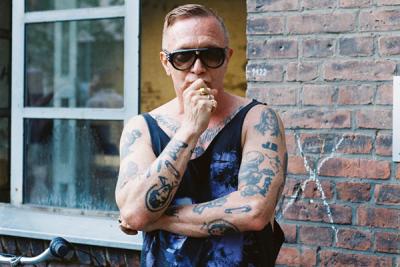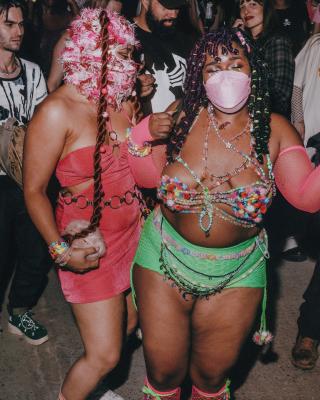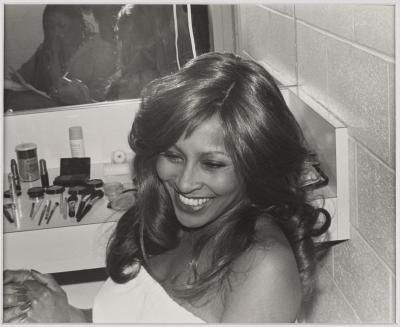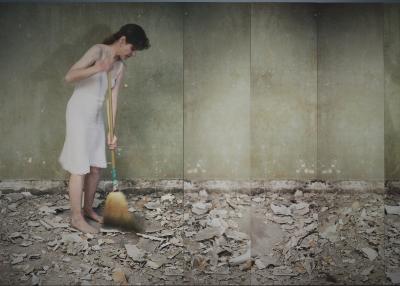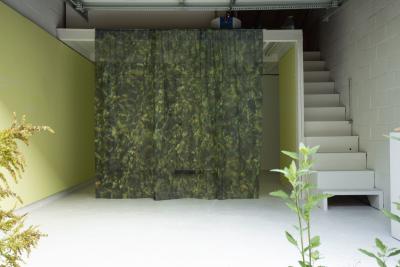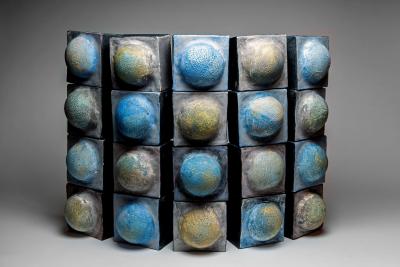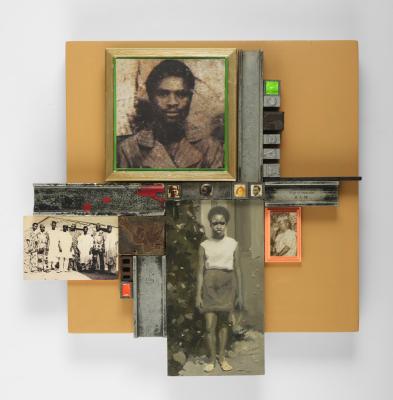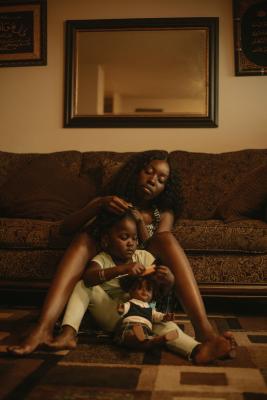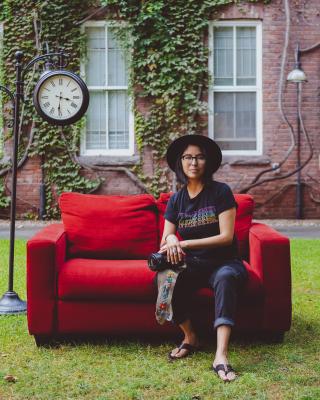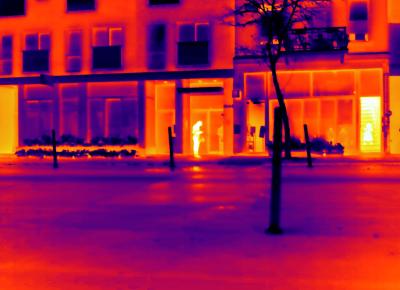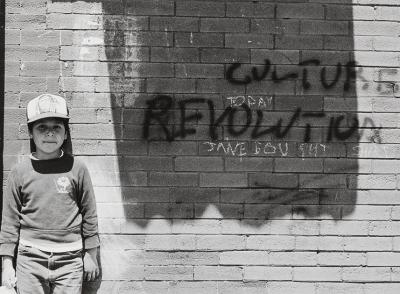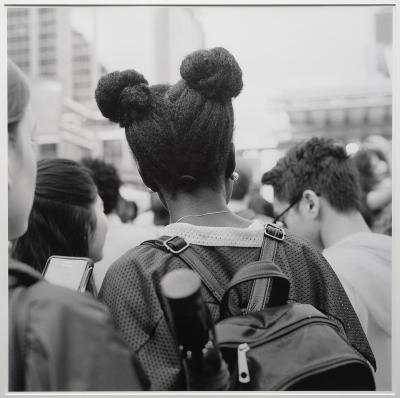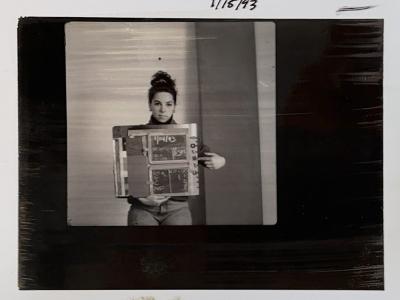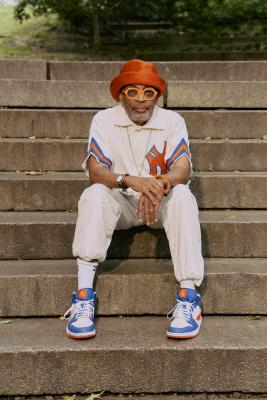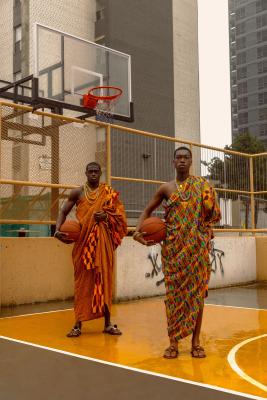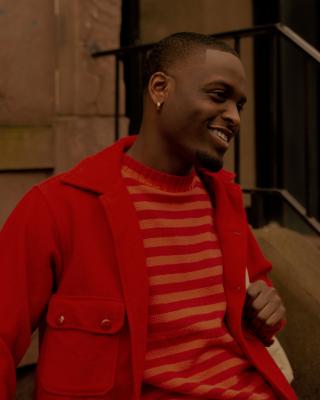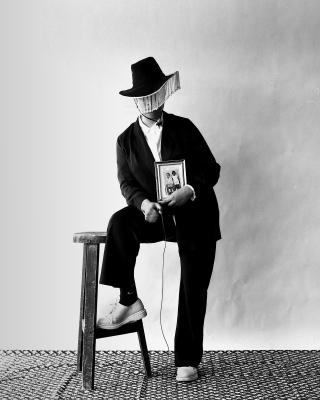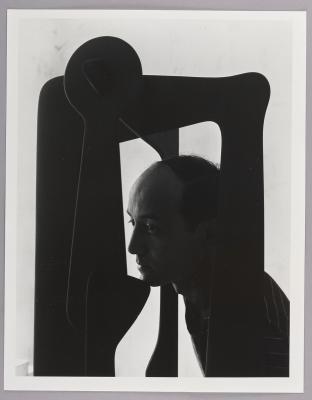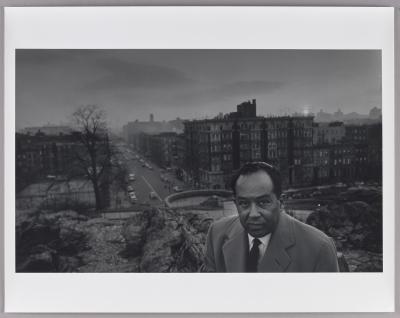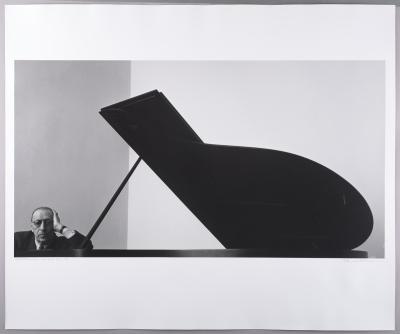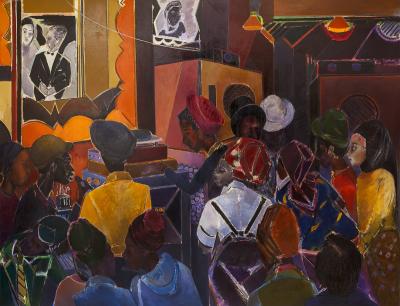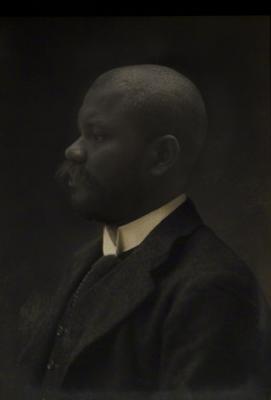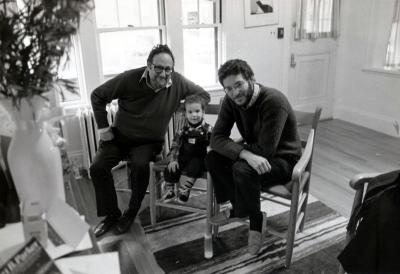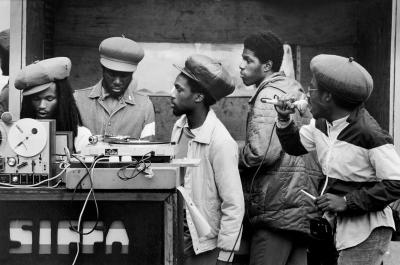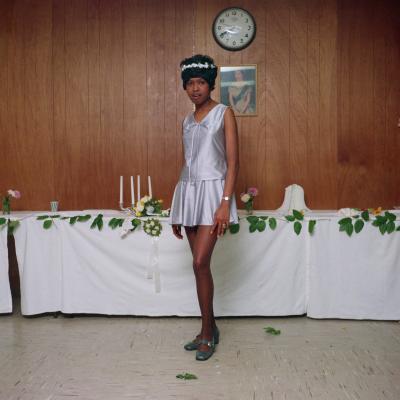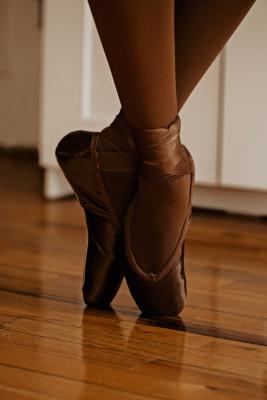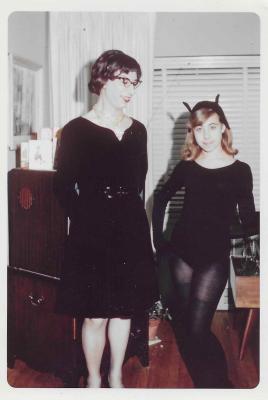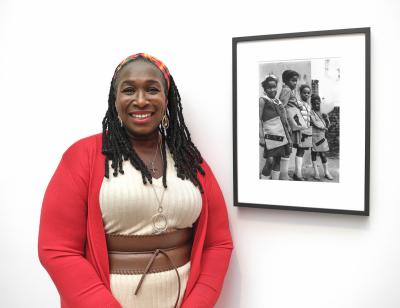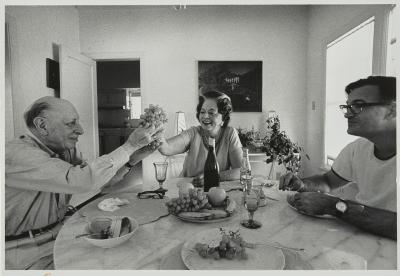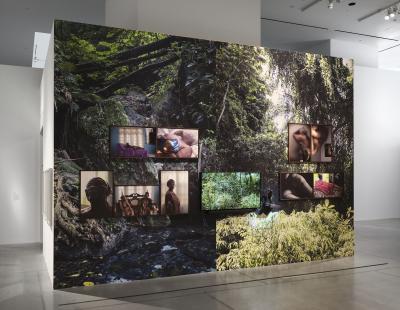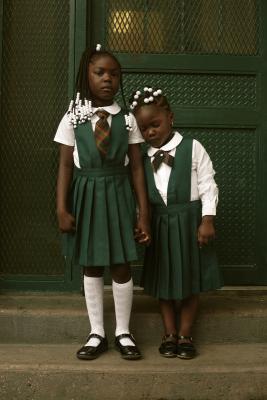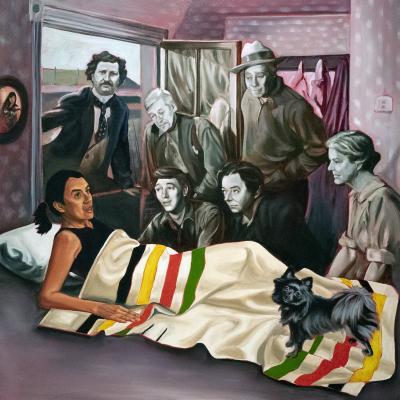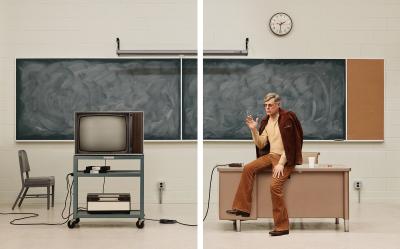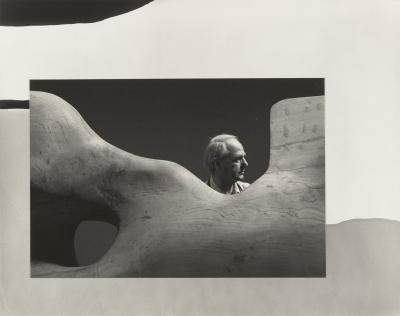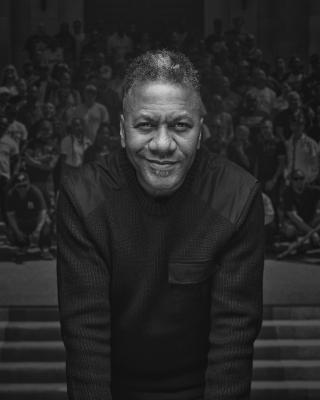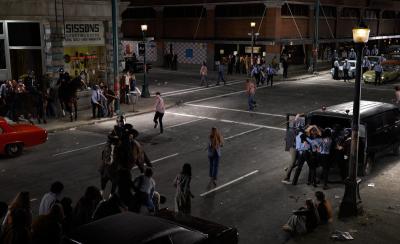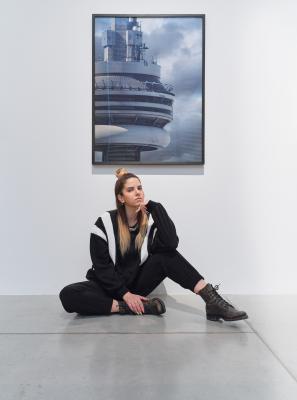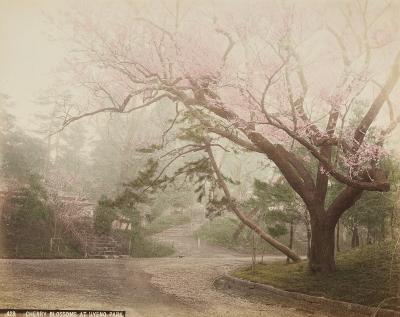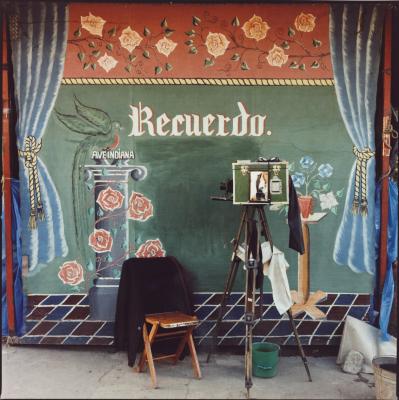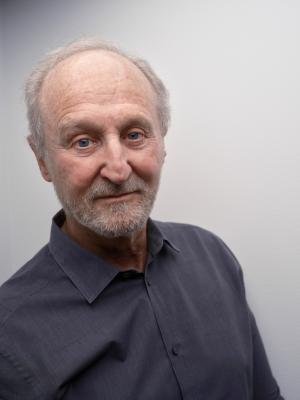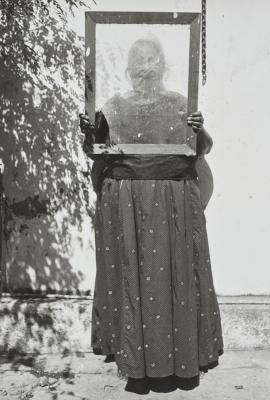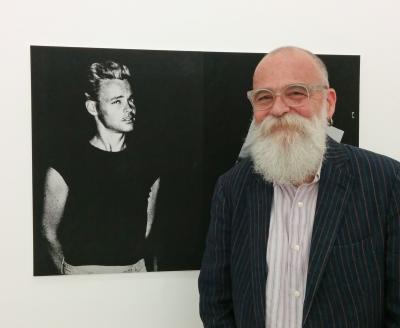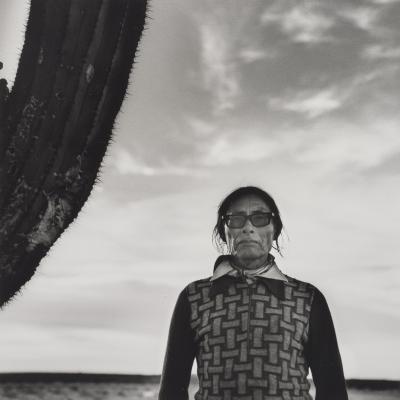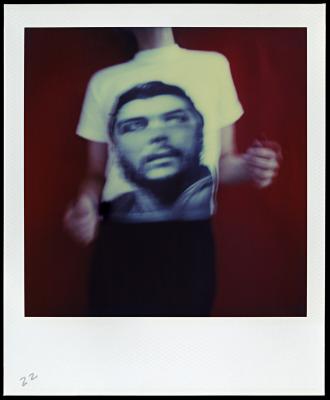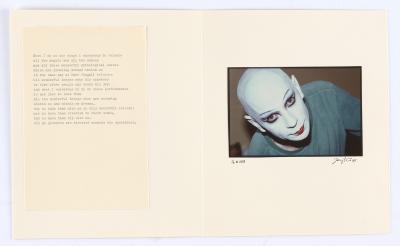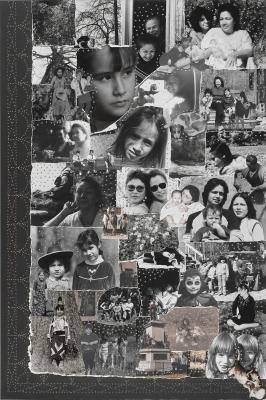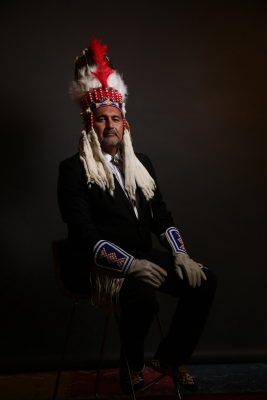Jake Peters on Photographing Lindsay Kemp
The Toronto photographer speaks about documenting the legendary Lindsay Kemp
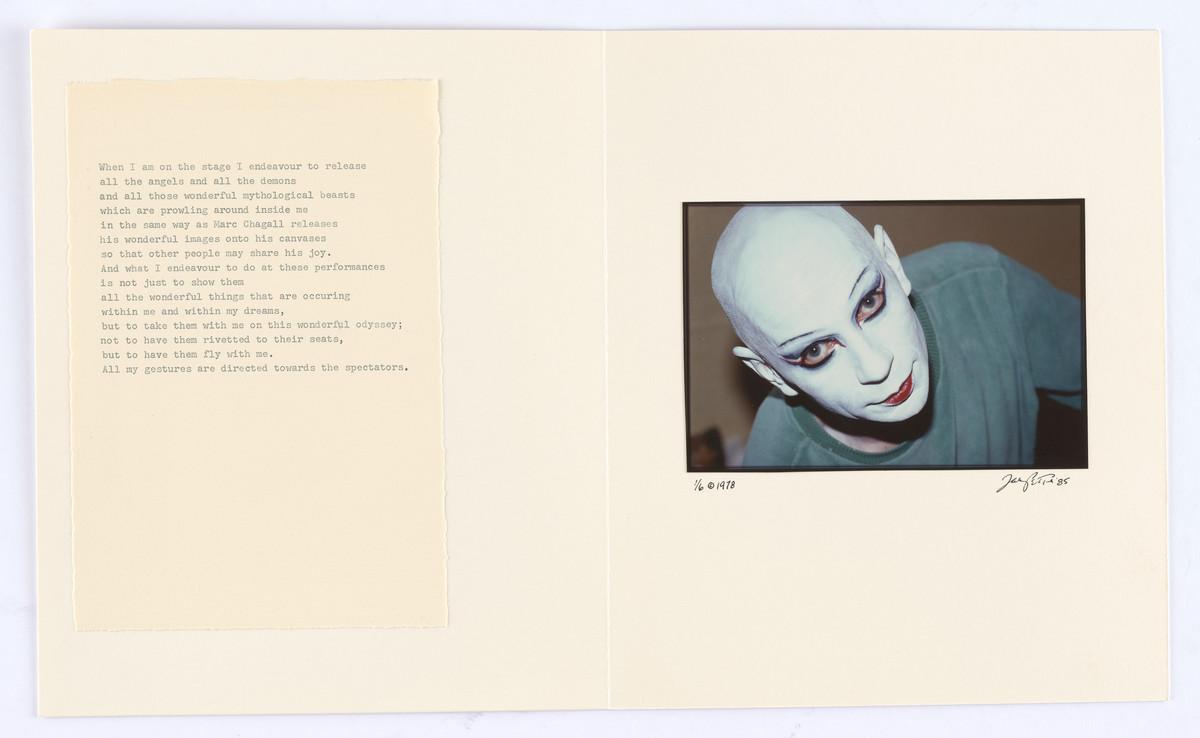
Jake Peters. Lindsay Kemp – Flowers from The Lindsay Kemp Portfolio, 1978/1985. Silver dye bleach print, typed text, mounted, Open: 30.4 × 50.5 cm. Art Gallery of Ontario. Gift of Robert Sirman, 2024. © Jake Peters. Photo: AGO. 2024/604
In 1978, internationally renowned mime artist and choreographer Lindsay Kemp brought his career-defining production, Flowers, to Toronto for the first time. Staged for several months at the Toronto Workshop Productions Theatre (now Buddies in Bad Times), Flowers stunned audiences and was a must-see for members of the city’s Queer community. For one local photographer, receiving a ticket to the show as a birthday gift became the catalyst for his first-ever solo exhibition, and a portfolio of photographs recently acquired by the AGO.
Jake Peters was just beginning his photography career in the late 1970s. After a moving experience attending Flowers, he was able to go backstage to document Kemp and his co-performers that night, resulting in a candid and intimate series of behind-the-scenes photographs. Peters first exhibited these works in 1980 at Idée Gallery in Toronto. Several years later, he created a portfolio that powerfully juxtaposes the photographs with text excerpts pulled from a CBC interview conducted with Kemp in 1978, during his time in Toronto.
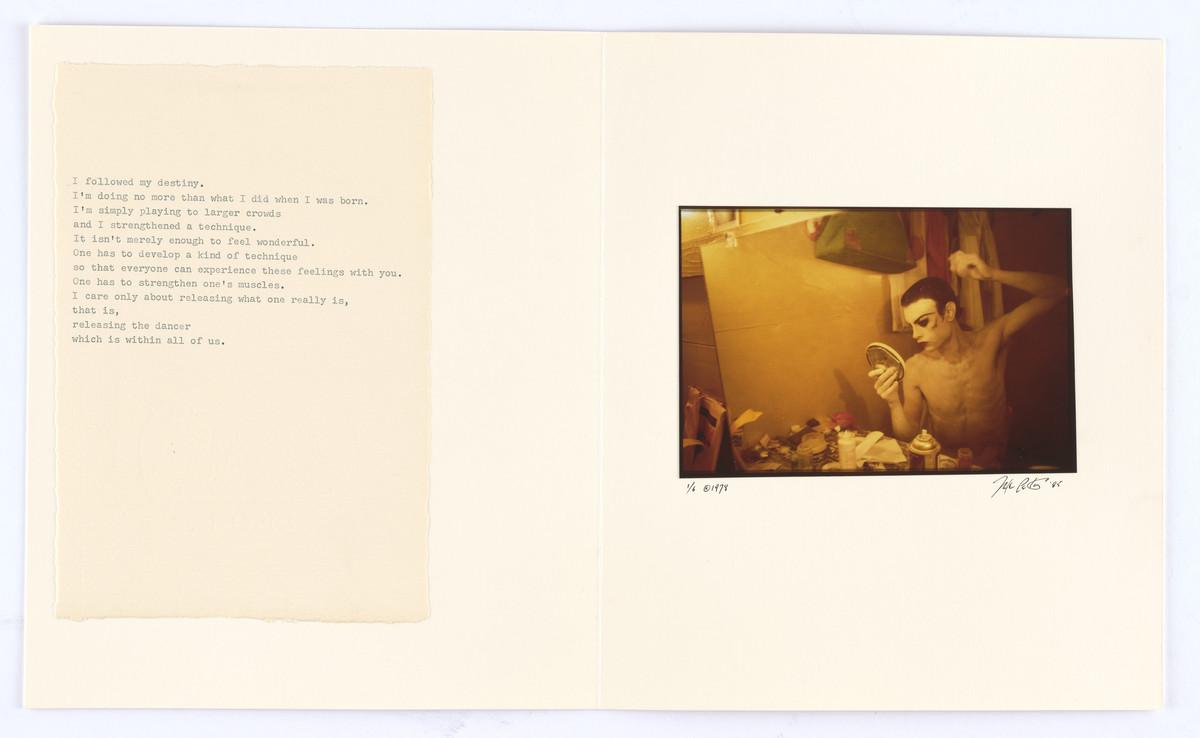
Jake Peters. David Haughton - Flowers from The Lindsay Kemp Portfolio, 1978/1985. Silver dye bleach print, typed text, mounted, Open: 30.4 × 50.5 cm. Art Gallery of Ontario. Gift of Robert Sirman, 2024. © Jake Peters. Photo: AGO. 2024/604
In 2024, Peters' portfolio was acquired by the AGO, making it the first documentation of Kemp’s career - and the first work of Peters’ - to enter the permanent collection. Mentor to both David Bowie and Kate Bush, Kemp’s influence spans multiple generations and spheres of art. A photograph from the portfolio will be on view as part of the upcoming AGO exhibition Collective Visions, which celebrates 25 years of the AGO’s photography department.
In the 40 years since Peter’s first exhibition, he has led a dynamic career as a freelance photojournalist and editorial photographer. He worked extensively in the late 1980s documenting the AIDS epidemic internationally. Among the many highlights in his body of work is a 1988 portrait of Canadian AIDS activist Chuck Grochmal, created for NOW Magazine.
Peters spoke to Foyer about his Lindsay Kemp portfolio, his experience seeing Flowers, and the highlights of his photography career.
Foyer: Can you share the inception story of your Lindsay Kemp portfolio?
Peters: My friends John Taylor and William Rowe bought me a birthday gift, a theatre ticket to see Flowers at Toronto Workshop Productions Theatre. We were absorbed in darkness, moving clouds, the sound of wind, soft singing voices and the smell of incense as we took our seats. I recall feeling relaxed in that gentle atmosphere for some minutes. Then, unnoticed at first, tiny lights appeared and grew—they revealed male bodies standing, suspended in cages stacked in scaffoldings. They moved slowly in erotic postures. This is how the piece began.
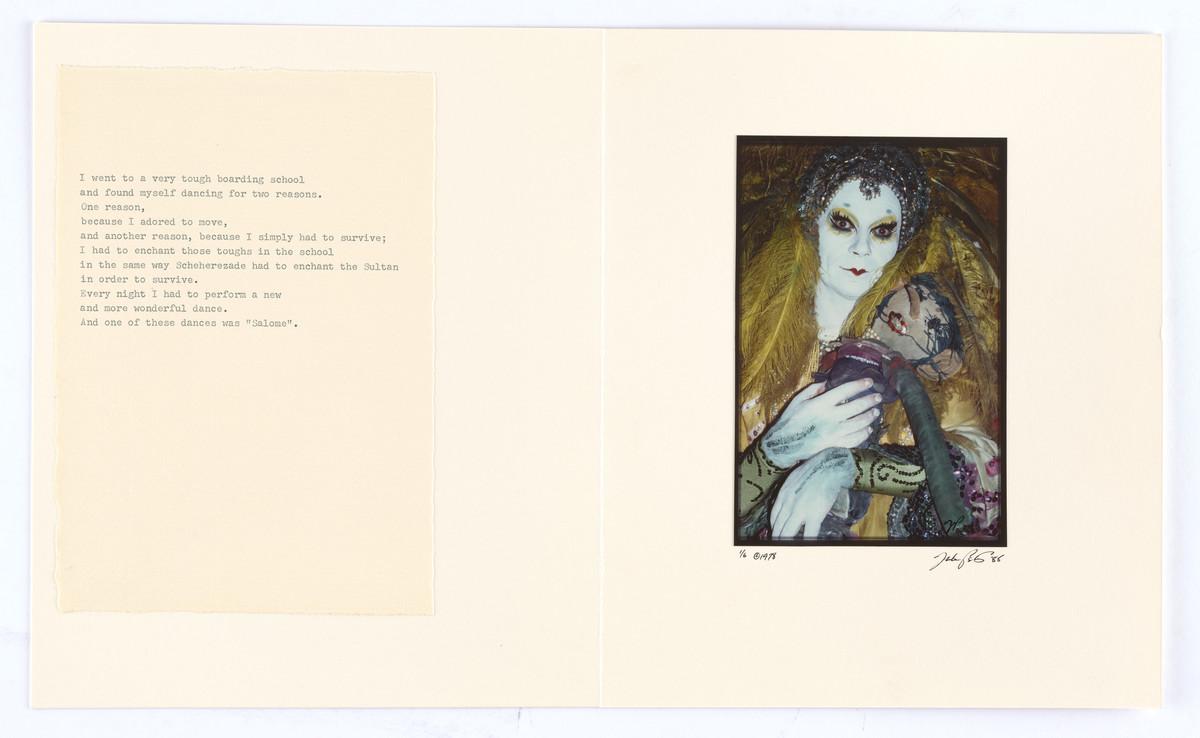
Jake Peters. Lindsay Kemp – Salomé from The Lindsay Kemp Portfolio, 1978/1985. Silver dye bleach print, typed text, mounted, Open: 30.4 × 50.5 cm. Art Gallery of Ontario. Gift of Robert Sirman, 2024. © Jake Peters. Photo: AGO. 2024/604
Can you describe the details of what you observed backstage while taking photos?
I’d worked in theatre, yet I’d never been so affected by a show as I was that evening. I returned to see it again. This time I brought my camera and two lenses. After the show, I went backstage and I, among many others there, asked if I might take some photographs while the cast changed from their costumes and makeup. They all said yes, and I, along with a number of other admirers, made photographs. I shot slide film. When I saw my images, I decided they were good enough to share. I printed 10 copies of each image on a Xerox colour printer, bound the images into separate books and went back to the theatre to give them to the cast and to June Faulkner, managing director of the theatre.
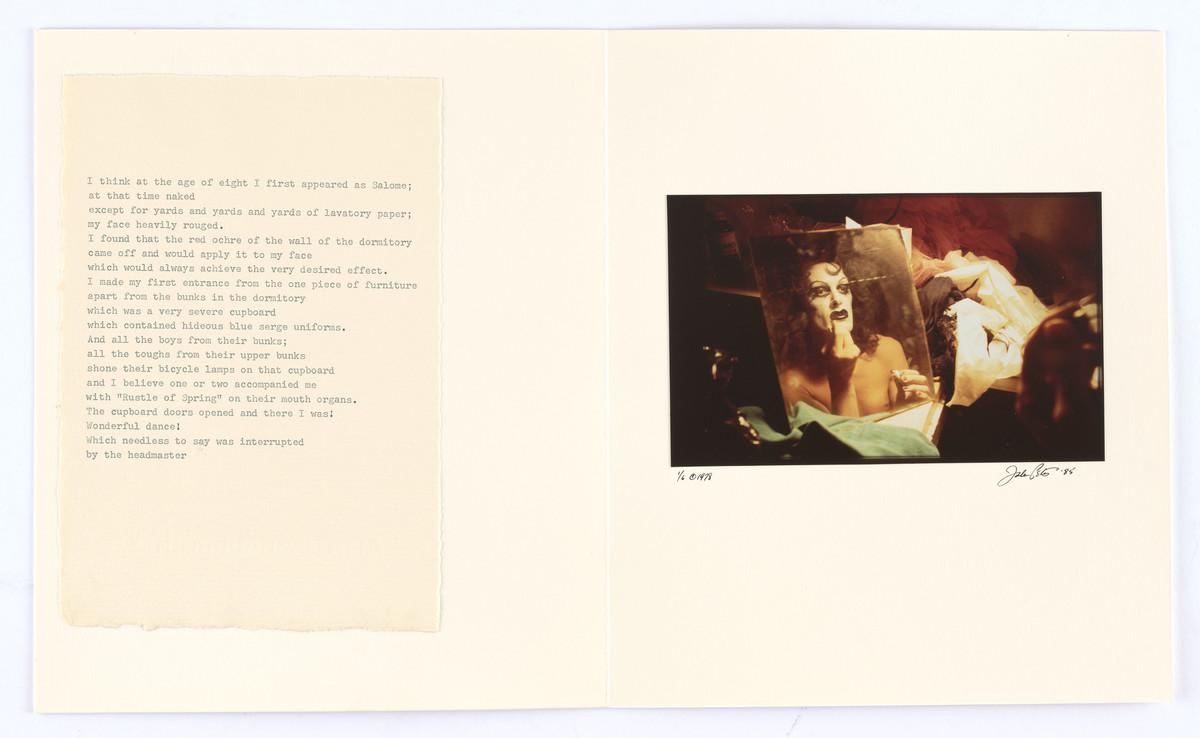
Jake Peters. Matou – Café Debris from The Lindsay Kemp Portfolio, 1978/1985. Silver dye bleach print, typed text, mounted, Open: 30.4 × 50.5 cm. Art Gallery of Ontario. Gift of Robert Sirman, 2024. © Jake Peters. Photo: AGO. 2024/604
After creating the photographs, you exhibited them at Toronto’s Idée Gallery in your first-ever solo exhibition. Can you tell us more about the exhibition?
In 1980, two years after I’d first seen Flowers, I dressed Idée Gallery with desiccated rose petals. I filled vases with dried flowers and strewed confetti on the shelves and flooring of the gallery. I hung images of varying sizes, some 30x40”. I wanted the room to appear as if Lindsay Kemp and his entourage had just been there and left their shadows behind. When the doors opened, crowds of every sort arrived, some on roller skates, some in gossamer costumes and painted faces, many looking like they’d just been in a Kemp performance themselves.
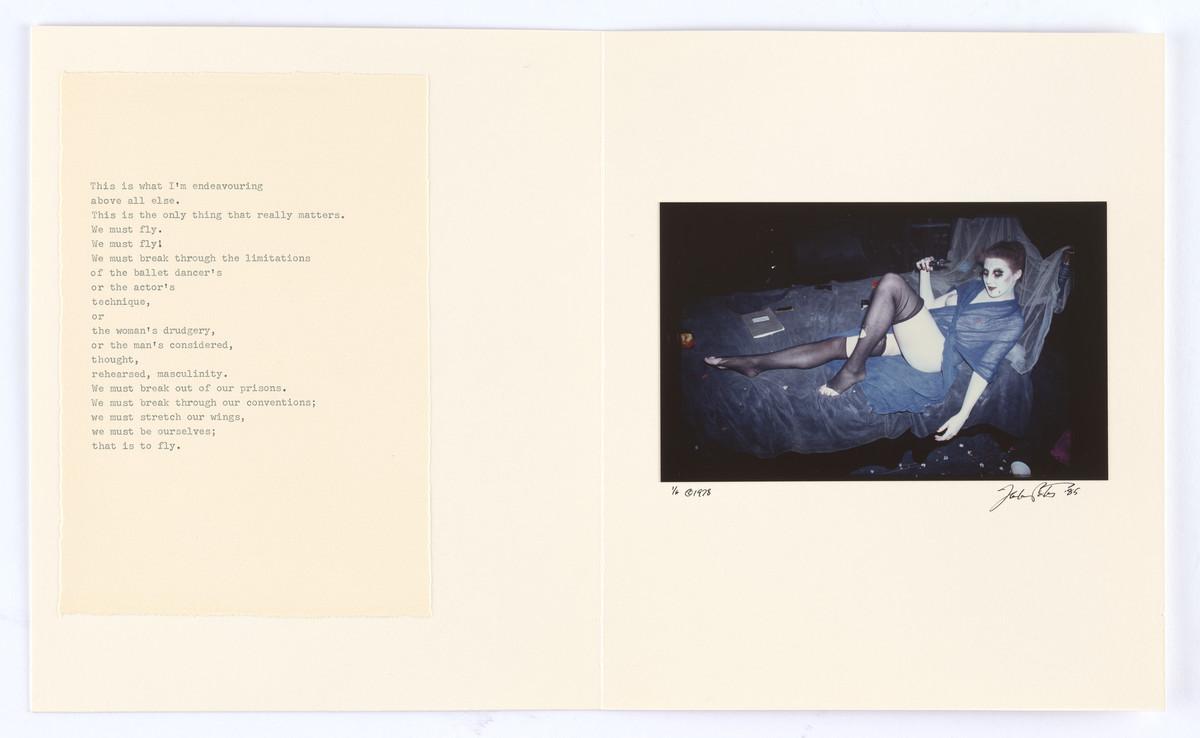
Jake Peters. Annie Huckle – Flowers from The Lindsay Kemp Portfolio, 1978/1985. Silver dye bleach print, typed text, mounted, Open: 30.4 × 50.5 cm. Art Gallery of Ontario. Gift of Robert Sirman, 2024. © Jake Peters. Photo: AGO. 2024/604
Since that show, you’ve led a long career as a beloved Toronto photographer. Can you share one or two of your most cherished career highlights with us?
In 1988, Irene Granger asked me to shoot a portrait for NOW Magazine. Chuck Grochmal was an AIDS activist who challenged the Canadian Government to arrest him for administering Pentamidine, an unapproved drug, to himself at an outdoor press conference in front of the Parliament Building. Chuck’s single-handed activism embarrassed Health Canada to forgo a three-year study, making the drug immediately available. I made the portrait in a bar where Chuck worked. I set up a softbox and selected the bar area as the background. I asked him to stand in front of my tripod and used a 28mm lens. A few of his fellow employees walked into the frame to see what we were doing. The image was like magic for me, the way the subjects fell into place. This was the first image I made on the subject of AIDS.
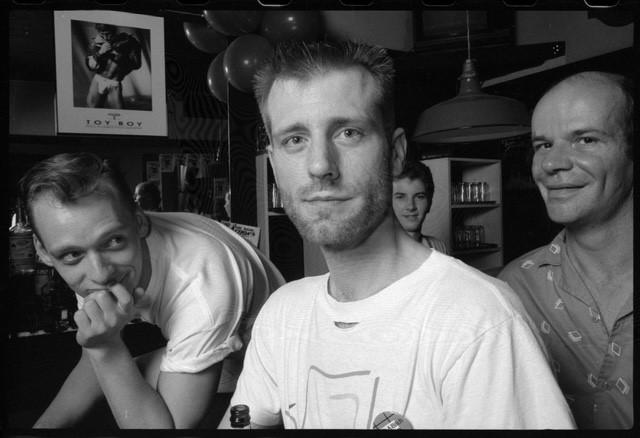
Image courtesy of Jake Peters
As in many cities in the 1980s and early 1990s, AIDS events and conferences occupied Toronto. The AIDS Walk began at City Hall. At the close of one of them, I photographed a man scrounging for leftover food scraps with a 50mm lens. I put the camera away, neglecting to develop the film until I picked it up a couple of months later to attend a local AIDS conference, not paying attention to the fact that I’d already exposed 36 frames. I squeezed off one shot and noticed I was at the end of the roll. When I looked at the negatives, I saw that frames 36 and 37, made months apart, are filled with identical compositional details and structural elements. I am consistently astonished by the similarity of elements echoed in each image.
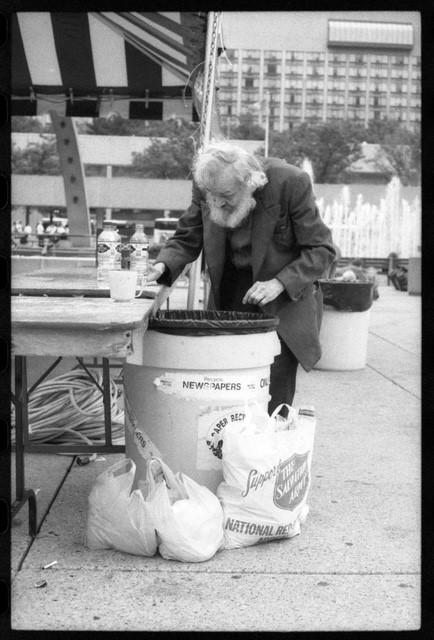
Image courtesy of Jake Peters
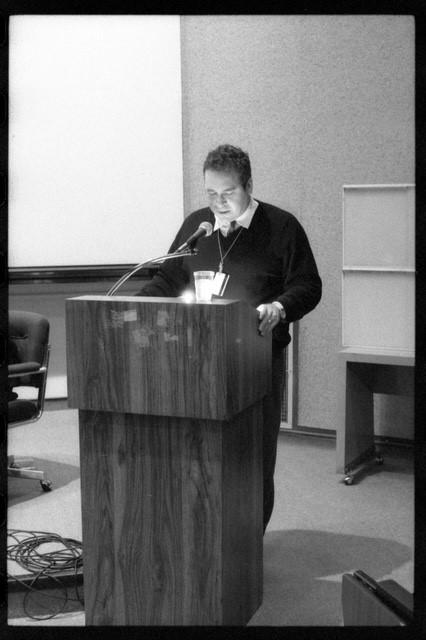
Image courtesy of Jake Peters
Collective Visions: Celebrating 25 Years of Photography goes on view at the AGO on November 7. Visit Foyer for more details in the upcoming weeks.
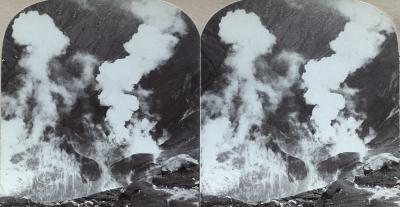
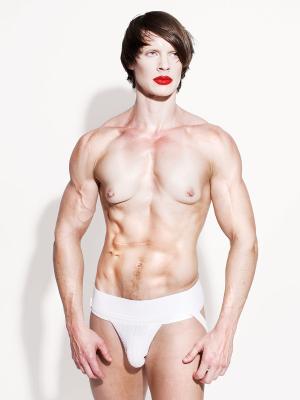
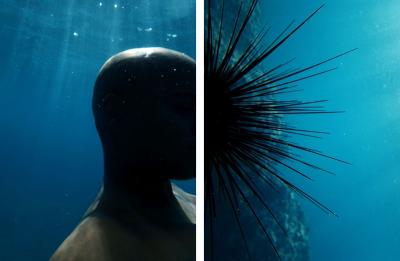
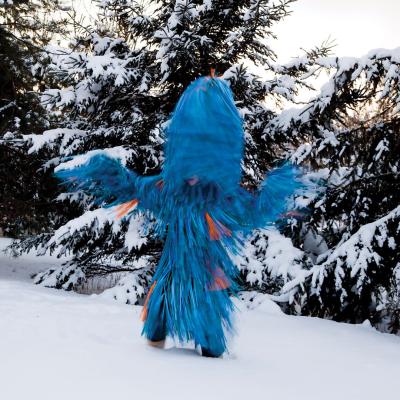
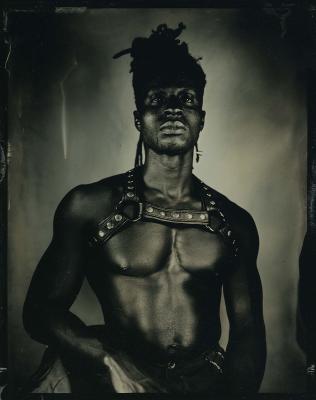
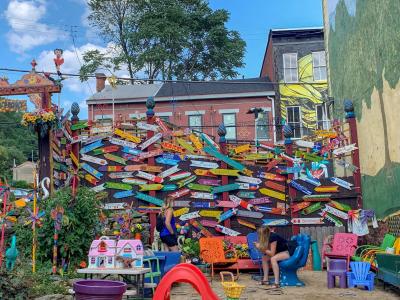
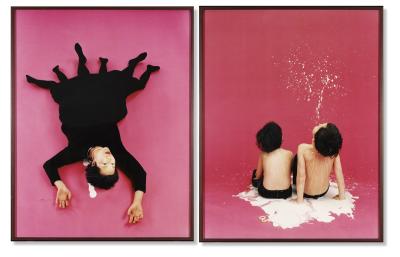
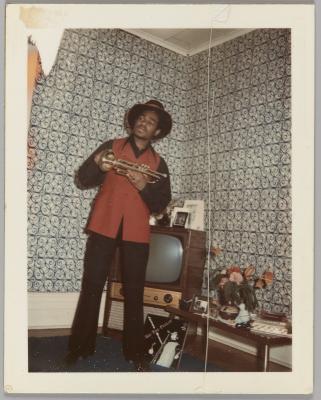
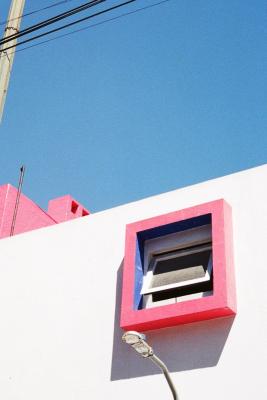
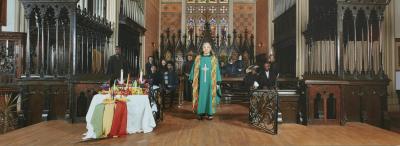
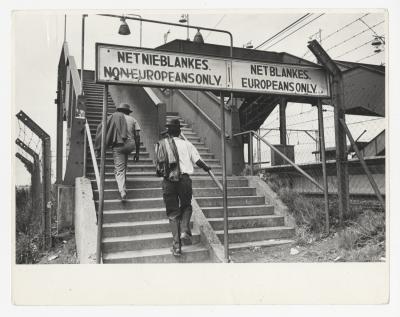
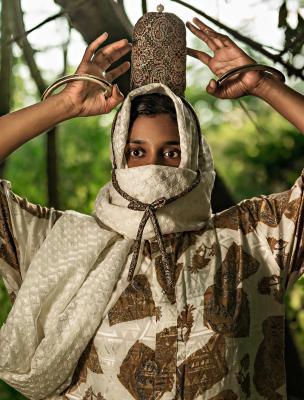
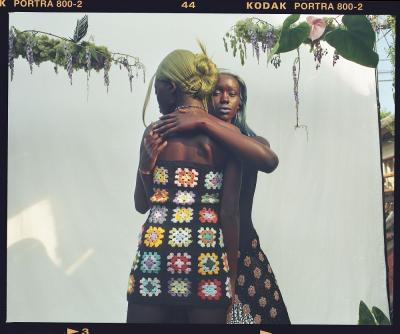
![Unknown photographer, Chillin on the beach, Santa Monica [Couple on beach blanket]](/sites/default/files/styles/image_small/public/2023-04/RSZ%20WMM.jpg?itok=nUdDiiKr)
